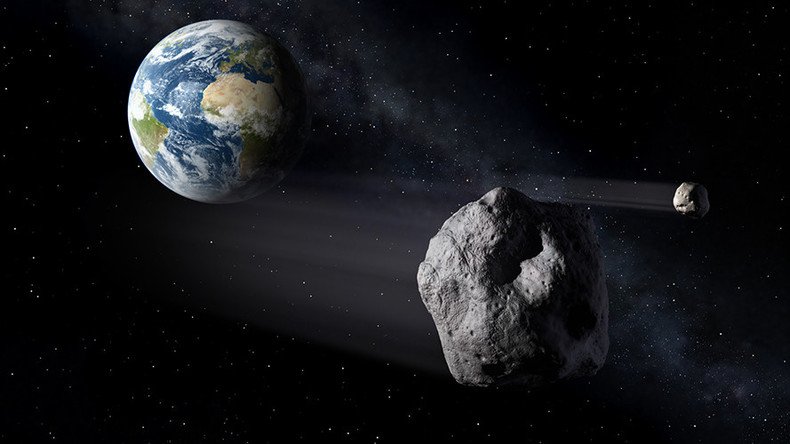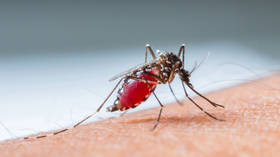100ft asteroid to careen past Earth in ‘close’ flyby – NASA

An asteroid measuring about 45 to 100ft (15 to 30 meters) in length is set to skirt by Earth on Thursday.
Asteroid ‘2012 TC4’ will come one-10th of the distance between us and the Moon, sailing just above the orbital altitude of communications satellites, some 26,000 miles (42,000 km) from Earth.
READ MORE: NASA lunar lava study ‘dramatically changes our view of the moon’
While there is no risk of the asteroid impacting Earth, astronomers say this close approach is a perfect opportunity for the International Asteroid Warning Network to work together and coordinate radar observations in a real scenario.
A worthwhile test: Here's how tracking networks will observe the close pass of small #asteroid 2012 TC4 on Oct 12 https://t.co/RIduui9unFpic.twitter.com/EpdEg0kxpn
— NASA JPL (@NASAJPL) October 10, 2017
It’s hoped the practice run will help hone the skills of asteroid trackers in the event of an actual strike on Earth. It’s worth noting that no known asteroid is predicted to impact Earth within the next 100 years, reports NASA.
“Asteroid trackers are using this flyby to test the worldwide asteroid detection and tracking network, assessing our capability to work together in response to finding a potential real asteroid-impact threat," said Michael Kelley, program scientist and NASA PDCO lead for the TC4 observation campaign.
And #asteroid 2012 TC4 about to sweep close ... https://t.co/Hi0B3IpdUQ NASA will use it as a test of its global asteroid defense system. pic.twitter.com/qU37LTcCzK
— EarthSky (@earthskyscience) October 10, 2017
READ MORE: Huge asteroid to fly past Earth at 1/8 of distance to moon
TC4 was first discovered by the Panoramic Survey Telescope and Rapid Response System (Pan-STARRS) on Hawaii back in 2012. Based on that initial observation, experts were able to predict another close flyby in the fall of 2017.
The European Space Agency and the European Southern Observatory picked up on TC4 once again in July this year using one of their larger telescopes, and have been tracking the object as it approaches Earth since.












